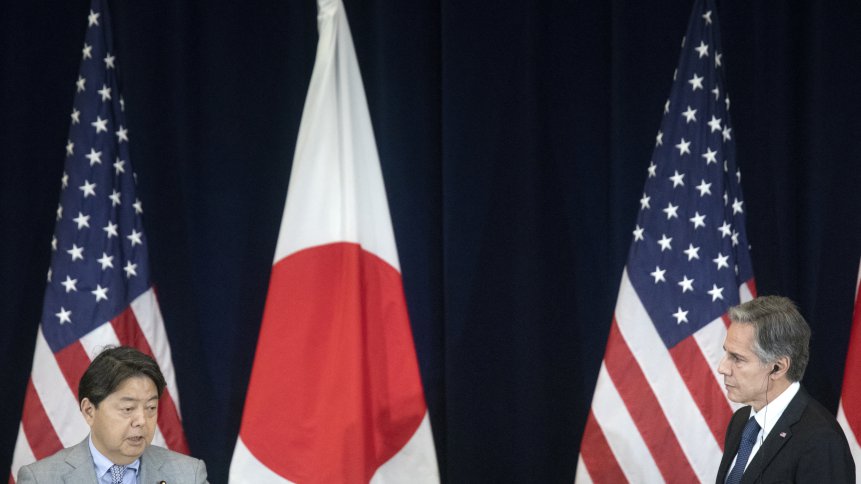Japan, US join forces to stay ahead in the semiconductor race

- The idea of Japan and the US is to build a state-of-the-art semiconductor supply chain that is very secure against leaks to China while leveraging the technological strengths of both the nations involved.
- Japan is also planning on setting up a domestic manufacturing base that will produce cutting edge 2nm chips, with the help of the US.
Forged in the wake of World War II, the security alliance between the US and Japan has long been important for both countries’ interests in Asia. Over the years, the alliance grew from a security-oriented pact to something that meets varied challenges in the Indo-Pacific region. Now, in a post-pandemic world, where technological advancement is as important as ever, the US and Japan share one common goal – to stay ahead of the curve, while taking on the growing influence of China in the global economy.
As the world’s first and third-largest economies, the US and Japan have always held their “two-plus-two” talks, involving the countries’ foreign and defense chiefs, to discuss security issues. Then came January this year, where the leaders of both nations agreed to establish an economic version of the dialogues. Fast forward to seven months later, to when they met in Washington last week and the US-Japan Economic Policy Consultative Committee (EPCC) was born.
In their first-ever EPCC meeting, leaders from both countries discussed the benefits of a rules-based international economic order, while emphasizing the need to make the US and Japanese economies, as well as those of their their allies, more competitive and resilient. The highlights though were their action plans on promoting and securing critical and emerging technologies and critical infrastructure.
That said, according to a joint statement, both Japan and the US noted the transformative opportunities that technological innovation provides, and committed to explore and support joint research and development projects for critical and emerging technologies together, and among like-minded partners. Japanese Trade Minister Hagiuda Koichi announced in Washington that Japan and the US had decided to launch a new joint international semiconductor research hub.
2nm chips by US & Japan?
Basically, the US will be working with Japan in a “bilateral chip technology partnership” in an effort to bolster manufacturing for 2nm chips as early as 2025. The plan is to compete with Taiwan Semiconductor Manufacturing (TSMC) and keep the company from dominating the next-gen chip market even more than it already has. The move will also allow for Japan and the US to stay ahead of China.
Commerce Secretary Gina Raimondo said there was extensive discussion Friday “about how Japan and the US could collaborate, especially with respect to advanced semiconductors.” Though no further details were shared in the joint statement, according to a report from Nikkei Asia, companies from both the US and Japan will work together on the research, design, and manufacturing of 2nm chips.
For context, those smaller semiconductors will be used in devices such as quantum computers, data centers, and smartphones. The benefit of 2nm over, let’s say, 5nm chips used for the Apple M1 chips, is the reduced power consumption along with speedier processing. The report also says that the size of the chips can “determine the performance of military hardware as well, including fighter jets and missiles. In that light, 2nm chips are directly linked to national security.”
The update comes less than a month after American and Japanese leaders said they would collaborate on next-generation semiconductors as part of broader agreement that also calls for “protecting and promoting critical technologies, including through the use of export controls.” While there was no mention of which companies will be involved, Nikkei said construction of a facility could start this summer, and that a research and manufacturing center could open between 2025 and 2027.
The fab could be established through the creation of a joint venture between Japanese and US businesses or a new manufacturing hub by local companies, as per Nikkei’s report. The project, however it happens, will receive subsidies from Japan’s Ministry of Economy, Trade and Industry to help cover research and development costs as well as capital expenditures.
Although TSMC is already building a fab in Japan, the plant will only make chips with older nodes that range from 10nm to 20nm. However, with a new US technology partnership, Japan could feasibly have access to Intel and IBM, which is also developing its own 2nm technology, as well as chip materials supplier Applied Materials.
Japan is also in the US’ Chip 4 Alliance, along with Taiwan and South Korea. The idea proposed by the US is to build a stable supply chain in the semiconductor industry by utilizing the US’ chip design capabilities and core technologies, South Korea’s and Taiwan’s manufacturing capabilities, and Japan’s strength in materials, components and equipment. This alliance between US, Japan, Taiwan and South Korea is intended to curb the growth of the semiconductor industry in China.









